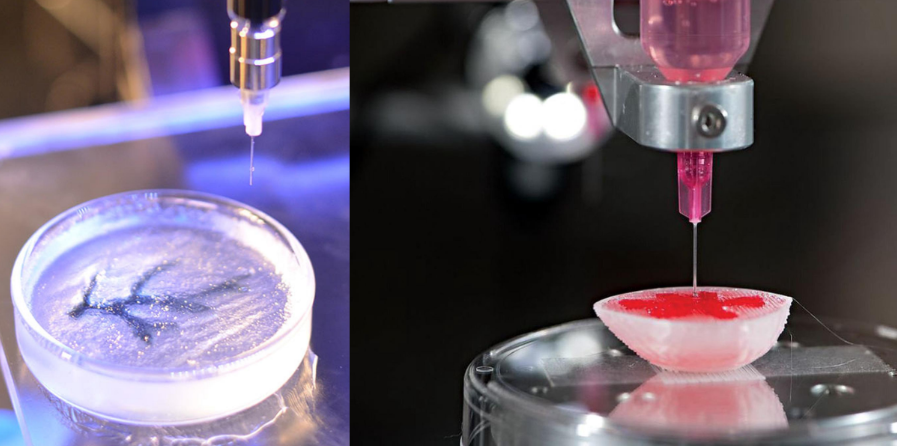Medical Devices & Consumables
Top Trends Shaping the Medical Devices Industry
Top Trends Shaping the Medical Devices Industry
Medical devices play a pivotal role in diagnosing medical conditions, providing quality treatment options, improving patient outcomes, and reducing overall healthcare costs. Medical devices are classified into three classes viz. class I or low risk devices such as bandages and handheld surgical instruments, class II or intermediate-risk devices that include CT scanners or infusion pumps, and Class II or high risk devices such as pacemakers and deep-brain stimulators. These devices are in high demand owing to increasing prevalence of various chronic and lifestyle-associated diseases such as diabetes, cardiovascular diseases, cancer, and neurological disorders across the globe.
The medical devices industry is rapidly expanding over the last few years and is expected to continue booming post COVID-19 outbreak as medical device companies are steadily adapting to novel methods of digital transformation for improving patient services and efficiencies, ensuring product quality, and complying with global regulations. High prevalence of chronic diseases, rising number of patients undergoing diagnostic and surgical procedures, and growing adoption of advanced medical devices in medium to large-scale hospitals, clinics, and other health centers are some key factors expected to drive global market growth during the forecast period.
However, the medical device industry is facing various challenges such as tight labor market, logistics concerns, rising hacker attacks, and high chances of misleading diagnoses. To cater to this, medical device companies are heavily investing in R&D activities to develop novel medical devices and equipment and are diving into innovative, novel, and infinite possibilities of IoT technology, data-driven improvements, and device connectivity among others.
Top 7 Emerging Trends In The Medical Devices Industry
Medical device industry comprises companies that are involved in developing, manufacturing, and supplying devices, diagnostic tests, equipment, and health information systems that are significantly transforming healthcare through early disease detection, minimally invasive procedures, and more effective treatment. The changing lifestyle patterns, rising geriatric population, and growing prevalence of chronic diseases and rare genetic disorders have resulted in increasing demand for advanced medical devices such as MRI machines, X-ray machines, infusion pumps, CT scanners, and LASIK surgical machines among others.
Leading market players are heavily investing in R&D activities and are focused on adopting novel technologies to safeguard their devices and improve patient outcomes. Here is a list of top 7 trends that are steadily transforming the medical device industry.
- Cybersecurity
- Wearable Technology
- 3D Printing Technology
- Device Connectivity
- 5G Technology
- Internet of Medical Things (IoMT)
- AI and Machine Learning
Cybersecurity - Patient information is crucial, and worth a lot of money. Over years, there has been a substantial increase in cyberterrorism in the healthcare and medical field. Medical devices are easy entry for data breachers and attackers as these devices are interconnected within the hospitals and health centers. The need for effective cybersecurity to enhance medical device functionality and safety is important due to high usage of wireless and internet-connected devices, and portable media, vulnerable to cyber threats. To reduce the risks of cybersecurity, medical device manufacturers are incorporating various advanced solutions, strategies, and blockchain technologies to ensure their medical devices are secure.
Wearable Technology - Wearable technology products are microprocessor powered and are capable of sending and receiving real-time patient data via internet. These are electronic devices that are hand free and can be implanted in patient’s body or can be worn as accessories or embedded in the clothing. With the help of wearable devices, doctors and healthcare professionals can monitor a patient’s heart rate, calorie count, glucometer readings, and other vital signs in real time. Some key applications of wearable technology include health monitoring, epidermal skin technology, sports and fitness, military, and education.
Smartwatches, fitness trackers, smart jewelry, pacemakers, AI hearing aids, and body-mounted sensors among others are some of the commonly used wearable devices. These wearable devices are one of the fastest selling medical electronic products due to increasing popularity of smartphones, rapid adoption of AI, and IoT growing awareness about maintaining good health and fitness.
3D Printing Technology-3D printing is another emerging technology, expected to gain traction in the medical device industry. 3D printing is a process of making 3D solid objects from a digital file such as computer-aided design (CAD) drawing or a Magnetic Resonance Image (MRI). Some of the most popular 3D technologies for medical devices include Selective Laser Sintering (SLS), Stereolithography (SLA), Fused Deposition Modeling (FDM), Direct Metal Laser Sintering (DMLS), and Selective Laser Melting (SLM).
Device Connectivity - Access to patient data helps healthcare professionals to make diagnostic assessments and use the most appropriate and effective form of treatment. Medical device connectivity offers full access to current patient information by measuring and transmitting patient data to Electronic Health Record (EHR). It also helps in reducing errors and allows remote monitoring of chronic diseases such as diabetes and high blood pressure. Device connectivity is thus safe, cost-effective, and time-saving as healthcare professionals can spend more time at the bedside with accurate patient data.
5G Technology - Medical devices often require high-speed and safe networking services for optimal speed. One of the latest additions to the networking systems is the 5G technology. 5G allows healthcare providers to use various devices for sending large data files during collaborative care with other medical professionals. Many leading market players are investing in research and development activities to develop medical devices with 5G connectivity.
Internet of Medical Things (IoMT) - Internet of Medical Things (IoMT) is consolidation of medical devices and applications that are connected to healthcare information technology systems using networking technology. Smart devices such as medical monitors, wearables, smart sensors, and gadgets are equipped with IoMT for remote patient monitoring. This latest addition to healthcare is expected to improve patient outcomes, increase efficiency, and lower overall costs.
AI and Machine Learning- Artificial Intelligence (AI) and machine learning is one of the latest addition to the medical devices industry that is rapidly gaining traction. AI in medical devices is fulfilling human capabilities in a variety of roles with deep learning techniques including prediction and identification of diseases, data classification, analysis for disease outbreaks, and diagnostic support application.
Conclusion:
Novel technologies such as cloud-based services, artificial intelligence, and 3D printing are rapidly paving the way for digital innovations in medical devices and helping healthcare professionals and technicians solve critical challenges. These technologies are steadily enhancing operational efficiency, speed, and overall productivity while reducing human interaction and errors.




